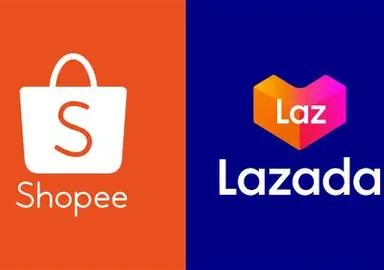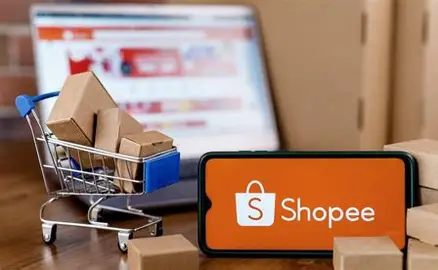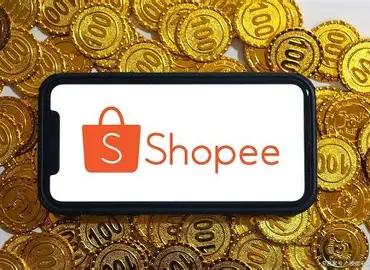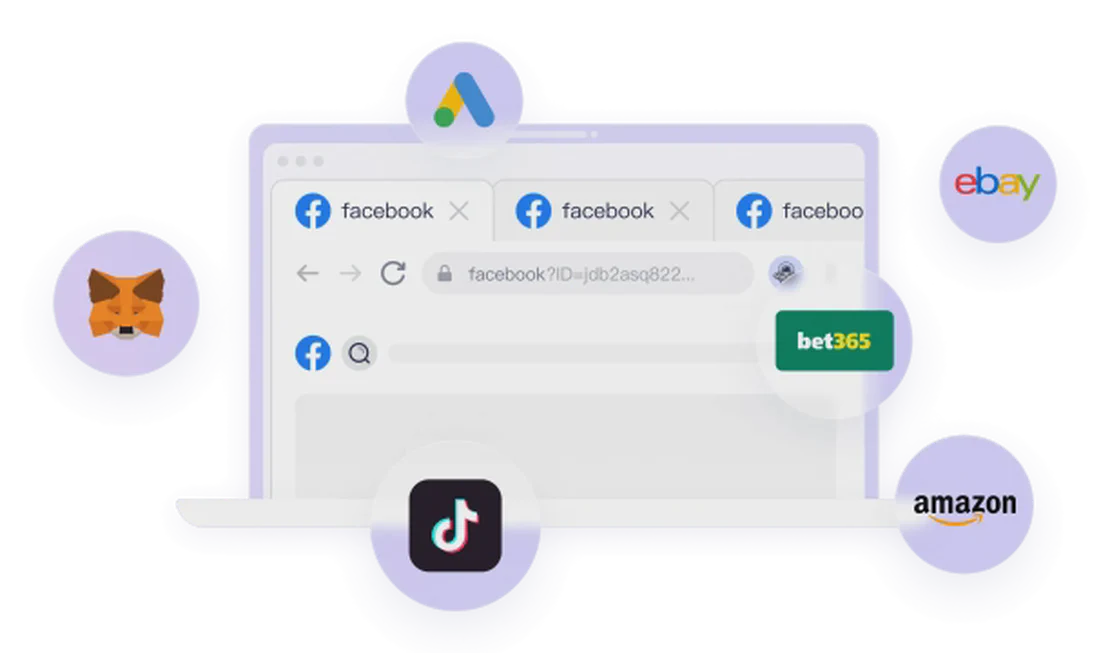In the world of business, stories where newcomers upend giants are always captivating. In 2015, the Southeast Asian e-commerce market seemed carved up. Lazada had the formidable backing of Alibaba. Tokopedia dominated Indonesia with millions of local sellers. The market appeared settled. Yet, onto this saturated battlefield stormed a little-known Singaporean startup called Shopee, launching a full-scale assault on seven markets simultaneously—a seemingly suicidal mission.
Just a few years later, this “latecomer” had miraculously surpassed all its rivals to become the market leader across the entire region. Shopee’s victory is more than a commercial win; it’s a textbook case study in strategy, revealing how a flexible, local, and human-centric emerging force can defeat what seems like an insurmountable goliath.

The Giant’s Dilemma: Unseen Market Realities
Before Shopee’s rise, e-commerce giants led by Lazada were by no means weak. Their predicament lay in applying a “globally integrated” perspective to an extremely fragmented Southeast Asian market, which led them to make several fatal mistakes.
1. Wrong Positioning: Trying to be “Amazon,” Forgetting “Amazon’s” Logic Was a Poor Fit for Southeast Asia
After its acquisition by Alibaba, Lazada received massive funding, but its strategy became “heavy-footed.” It chose to target the premium market, introducing luxury and branded goods, hoping to support its business model with higher average order values. It severely underestimated the core demand of Southeast Asian consumers: value for money and low prices.
Lazada tried to mold itself into an “Amazon of Asia,” but Amazon’s success is built on a mature credit card system, efficient logistics, and a high degree of user trust in online transactions—all of which were nearly non-existent in 2015 Southeast Asia. It invested heavily in the wrong direction, ultimately becoming detached from the fundamental needs of the majority of consumers.
2. The Ignored “Trust Gap” and “Infrastructure Deficit”
The Southeast Asian market presented a massive “trust gap.” In many countries, up to 70% of adults were unbanked or underbanked. For these users, online payments were fraught with uncertainty and risk. Cash remained their most trusted transaction method. Furthermore, the logistics system was woefully inadequate. Packages arriving late, damaged, or not at all were common occurrences, and this poor fulfillment experience further eroded consumer confidence in e-commerce.
3. The “One-Size-Fits-All” Arrogance: Ignoring That “Southeast Asia” is Seven Different Countries
The most critical mistake was treating the entire region as a single market. These giants tried to force one solution (e.g., one app, one payment method, one marketing message) onto seven countries with distinct languages, cultures, currencies, payment habits, and shopping preferences. A strategy that worked in Singapore could fail completely in Vietnam; popular payment methods in Thailand were useless in the Philippines. This cost-effective, centralized thinking came at the expense of user experience and localization.
4. The “Desktop” Legacy: Failing to Embrace a Mobile-First Future
Mobile internet was proliferating across Southeast Asia at an unprecedented pace, with the phone being the primary way people accessed the internet. However, the core experience of most major e-commerce platforms was still designed for desktop computers. Their mobile apps were clunky, slow, and hard to use. In the high-stakes mobile-first era, these giants offered users a terrible first point of contact.

The Newcomer’s Sharp Sword: Shopee’s “Counter-Intuitive” Strategy
Facing these seemingly insurmountable obstacles, Shopee didn’t choose to fight head-on. Instead, it charted a completely different course. The core of this strategy can be summed up in one phrase: “Deep Localization.”
1. C2C Model: Activating the Local Ecosystem with “Capillaries”
Instead of replicating Lazada’s complex B2C warehouses and logistics from the start, Shopee boldly adopted a C2C (consumer-to-consumer) model. In Southeast Asia, where mobile payments and logistics were still immature, C2C was the lightest and fastest way to launch.
It lowered the barriers for sellers, allowing millions of small vendors and individuals to open shops for free. These small sellers, who couldn’t afford Lazada’s hefty commissions, spread across seven countries like capillaries, contributing a vast, long-tail selection of products in a short time, forming a rich “human, goods, venue” ecosystem.
2. “Shopee Guarantee”: Pouring a Foundation of Trust with Escrow
To solve the consumer trust problem, Shopee launched a revolutionary “transaction guarantee” service. The buyer’s payment was held in escrow until they confirmed receipt of the item and were satisfied. Only then would the funds be released to the seller. If something went wrong, the buyer could get a refund. This seemingly simple feature became Shopee’s “icebreaker.” It provided a risk-free “safety net” for consumers who had never shopped online, dramatically lowering the threshold to try e-commerce and successfully bridging the “trust gap.”
3. Localization Beyond Translation: Building a “Native App” for Each Country
Shopee deeply understood that Southeast Asia is not a single block, but a puzzle with seven independent pieces. Therefore, it chose to develop a separate app for each country. This came with high R&D and maintenance costs, but the results were astonishing.
- UI/UX Localization: The Indonesian app was vibrant and colorful, while the Singaporean app was cleaner and more efficient, fitting its status as a global city.
- Feature Customization: In Vietnam, users could track the real-time location of motorcycle delivery riders. In Indonesia, Shopee integrated local e-wallets like OVO and GoPay.
- Marketing Localization: In Thailand, Shopee sponsored popular TV dramas and cast local stars. In Indonesia, it partnered with football clubs. During Ramadan, in Muslim-majority markets, it launched themed promotions. For Chinese New Year, Singapore, Malaysia, and Taiwan received red-themed designs and lucky number discounts.
This deep cultural immersion made users in each country feel that Shopee was “one of us,” building an unparalleled brand affinity and trust.
4. Building “Logistics + Payments” Moats with a Local Touch
As its user and seller base exploded, Shopee faced a logistics capacity crunch. Traditional logistics providers couldn’t cover remote islands and poor road conditions. So, in 2017, Shopee launched SPX Express, but it did things differently. It didn’t immediately pour millions into trucks and large warehouses. Instead, it built a network of “neighborhood collection points.”
It recruited local partners—convenience store owners, retirees, students, stay-at-home parents—to receive and distribute packages. These partners became the backbone of SPX. How it worked? Packages went to a nearby local point, and customers picked them up at their convenience. This solved the “last-mile” problem, created jobs for the community, and allowed the network to scale quickly with low investment. By 2024, SPX Express handled a large share of Shopee’s parcels and held about a quarter of the regional logistics market.
From Underdog to Leader: The “Glocalization” Paradigm
Shopee’s victory was, in essence, a triumph of “Glocalization” (Globalization + Localization). It used a powerful technology platform and business ecosystem as the “global” skeleton, but infused it with a deeply localized execution as the “local” flesh and blood.
Its success didn’t stem from capital or first-mover advantage, but from the deepest, most humble understanding of the market. It wasn’t trying to force users to adapt to the platform; it was fundamentally transforming the platform itself to adapt to the users. In the end, not only did it succeed in Singapore, but it also defeated the deeply entrenched local champion Tokopedia in key markets like Indonesia, orchestrating one of the most stunning “David vs. Goliath” victories in business history.
FlashID: The “Invisible Armor” in the Global Commercial War
Shopee’s epic rise offers a masterclass for all companies with global ambitions: on the chessboard of globalization, strong capital and first-mover brand recognition are important, but what truly determines success is the depth of your execution and user insight in every “local battle.” This means you must build independent teams, strategies, and even operational models for each country.
However, this “sprouting at multiple points” global strategy brings a new-century challenge: the risk of multi-account identity correlation. Imagine Shopee’s Southeast Asian market team needing to simultaneously manage and operate tens of thousands of social media accounts (Facebook Pages, Instagram accounts), KOL partnerships, and affiliate marketing accounts across various countries (Indonesia, Vietnam, Philippines) to launch localized marketing content and ads. The success of these accounts is central to its “localization” strategy.
If these accounts from different countries, executing different marketing tasks, were “linked” by platforms like Facebook, Google, or e-commerce systems (like Tokopedia’s affiliate network) and identified as being under the same operator, the consequences would be catastrophic:
- Account Bans: Platforms might flag you for spamming or “inflating metrics,” leading to a mass ban of all your marketing accounts, instantly nullifying all your local efforts.
- Sharply Reduced Marketing Efficiency: Once marked as a high-risk operator, your ads would face stricter reviews and lower reach, making your marketing costs soar.
- Business Model Scrutiny: For a platform like Shopee that relies on a massive ecosystem of sellers and promotions to drive growth, any suspicion of “fame buying” or fake growth would severely damage investor and user confidence.
FlashID Anti-Detect Browser is the ultimate solution for managing this “global multi-account operation” challenge. It can create completely separate, isolated digital identities for a company’s different business units (e.g., Indonesia Marketing Team, Vietnam Marketing Team), and even for different projects within a department (e.g., Social Media Group, Affiliate Group).
In the eyes of these platforms, every login and action from these accounts appears to come from independent users in different parts of the world, using different devices and networks. This provides an “invisible armor” for Shopee and other companies’ global account matrices, allowing their deep-rooted local strategies to execute freely in a safe and stable environment. Whether managing hundreds of social media accounts or operating thousands of affiliate partners, FlashID ensures the purity and independence of every “identity,” allowing truly deep “localization” strategies to gallop without restraint.

Frequently Asked Questions (FAQ)
Q: What was the core strategic difference between Shopee and Lazada?
A: The core difference lies in market philosophy. Lazada leaned towards a global, B2C model, trying to impose a single premium standard on the market. Shopee, in contrast, embraced a deeply localized C2C model, proactively adapting to and meeting the needs and pain points of Southeast Asian consumers.
Q: How exactly does the “Shopee Guarantee” work?
A: When a buyer places an order and pays, the funds are held in Shopee’s third-party escrow account. After the buyer confirms they have received and are satisfied with the item, the payment is released to the seller. If the product is faulty or doesn’t arrive, the buyer can apply for a refund, and Shopee will intervene to process and issue the refund, guaranteeing a safe transaction.
Q: Why was Shopee’s logistics network (SPX Express) considered so clever?
A: Because it chose a “light asset,” social model instead of a “heavy asset” one (building its own fleet of trucks and warehouses). By recruiting local convenience stores as pickup partners, it solved the Southeast Asian “last-mile” logistics challenge with minimal cost and maximum speed, while also empowering the community.
Q: In what specific ways did Shopee’s “deep localization” manifest?
A: It manifested in UI/UX design tailored to local tastes, integration of local payment methods, and marketing campaigns adapted to different cultures (e.g., sponsoring Thai soap opera idols or Indonesian football clubs). Even its games and promotions were customized for local holidays like Ramadan and Chinese New Year.
Q: Wouldn’t the C2C model, with its inconsistent product quality, harm the user experience in the beginning?
A: That risk certainly existed, but Shopee mitigated it with its “Shopee Guarantee” system. By relying on a massive volume of low-cost products to meet basic needs and attract users, it successfully navigated this initial phase. As the platform matured, it later introduced brand official stores and stricter seller vetting to balance the ecosystem.
Q: What was the direct impact of Shopee’s rise on Southeast Asian consumers?
A: It directly boosted the adoption of online shopping, offered a more diverse and cheaper range of products, significantly improved the “last-mile” delivery experience, and provided local small sellers with a new sales channel.
Q: Besides Tokopedia, what other competitors is Shopee facing?
A: Its biggest current challenge comes from TikTok Shop. Leveraging its powerful social media DNA and livestream e-commerce model, TikTok is growing rapidly in markets like Vietnam and Thailand, posing a direct threat and forcing Shopee to increase its investment in “content-driven commerce.”
Q: How does FlashID help a company with global multi-account management needs like Shopee’s?
A: FlashID creates unique IP addresses and browser fingerprints for each marketing account (e.g., Facebook, Google Ads, social media accounts), ensuring they appear as completely separate, independent users to the platforms, thereby preventing bans or restrictions due to “account association.”
Q: If I’m just an individual cross-border seller, how can FlashID be useful to me?
A: Even individual sellers often need to manage multiple stores across different platforms (Amazon, eBay, independent sites) or manage multiple stores on a single platform for A/B testing. FlashID helps you safely manage these accounts, avoiding being flagged for association by platforms for operating from the same environment.
Q: Besides preventing bans, what are the other benefits of using FlashID?
A: It can significantly improve operational efficiency and reduce labor costs. Through its RPA automation and window synchronization features, you can manage and operate hundreds or thousands of accounts from a single software interface, automatically performing repetitive tasks like logging in, posting, liking, and commenting, truly enabling scalable operations.
You May Also Like
